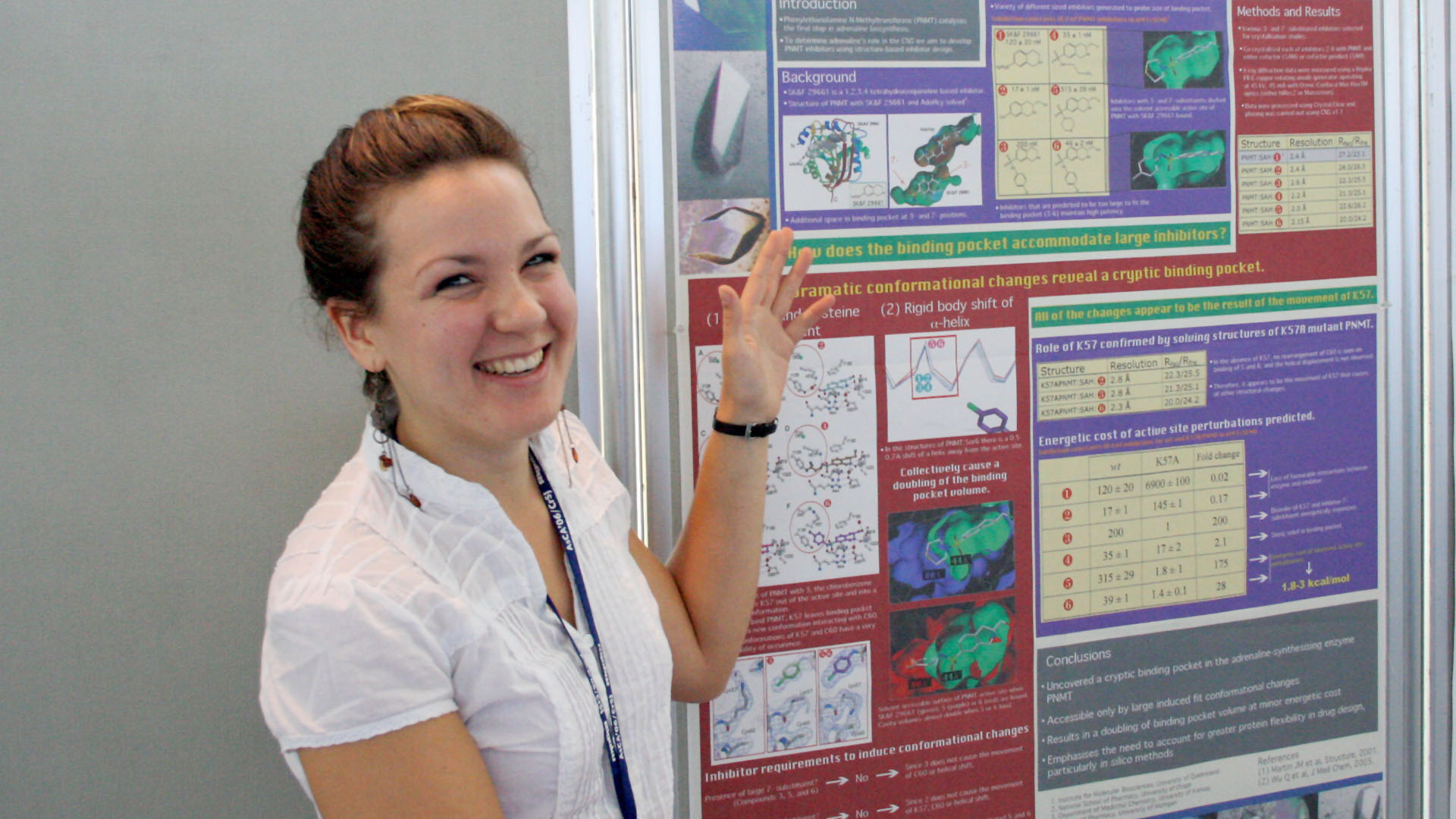Designed for discovery
Nyssa Drinkwater’s IMB training set her on a path to support hundreds of researchers across Australia and beyond.
Nyssa Drinkwater’s journey from IMB undergraduate to national drug discovery leader is a story of structure, both molecular and institutional.
As one of the first in Australia to work with fragment-based drug discovery using crystallography, Nyssa’s PhD research broke new ground. But it was the culture and community around her that left an even greater mark.
“I joined IMB as an undergraduate scholarship student in my third year of science,” Nyssa explains. “I ended up staying for five years—it was that good.”
She started off in the lab of Professor Jenny Martin, a structural biology powerhouse and an early role model who helped shape Nyssa’s confidence as a young scientist. “At the time, I didn’t realise how rare and powerful it was to be surrounded by such impressive women in a field traditionally dominated by men,” she says. “Jenny ran the lab in a way that made it feel normal to be a woman in science. It wasn't until I left and found myself the only woman in a room of 15 men that I really appreciated the strength of that environment.”
After completing her PhD, Nyssa’s career took her from King’s College London to Monash University, and eventually into commercialisation and leadership roles across research development and infrastructure. Today, she is the manager of Compounds Australia at Griffith University, Australia’s national facility for the management and distribution of small molecule screening libraries. The facility supports hundreds of academic and industry research programs nationally and internationally, including many at IMB.
“It has a nice balance to it,” she reflects. “I trained at IMB, and now I’m part of the system that supports IMB to make discoveries.”

Much of Nyssa’s career has been spent bridging academia and industry. That foundation in translational science, thinking beyond the bench, was set early. “The calibre of science at IMB was extraordinary, but what really made it unique was the professional support team and the institute’s world-class infrastructure,” she says. “At the time, I definitely didn’t appreciate how unique that was!”
Another cornerstone of her experience was IMB’s emphasis on cross-disciplinary collaboration. “All the disciplines were mixed together—cell biologists, chemists, structural biologists, and biophysicists. You put a chemist and a cell biologist at the lunch table and suddenly a new idea would spark,” she says. “Drug discovery is a team sport. You need that kind of environment to make real progress.”
As science moves into a new era, facing new pressures and possibilities, Nyssa believes IMB’s multidisciplinary spirit remains one of its greatest strengths.
“Discovery science takes time. It needs space to breathe, to make mistakes, to follow interesting trails of thought. IMB sought to nurture that,” she says.
Now, as she supports the next generation of discovery from behind the scenes, Nyssa is proud to help build the kind of scientific ecosystem she once benefited from. “IMB didn’t just prepare me to discover new molecules—it gave me the framework to help others do the same.”
